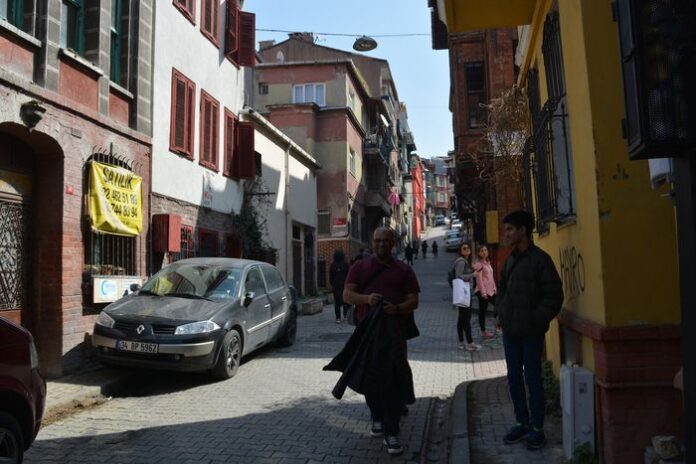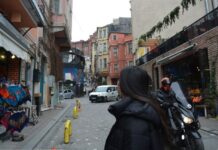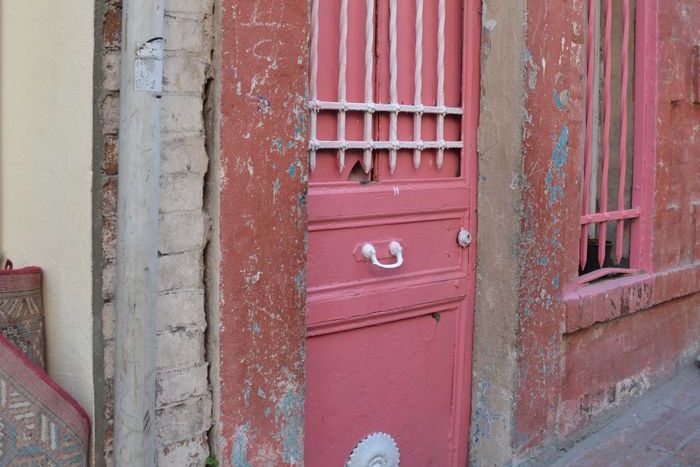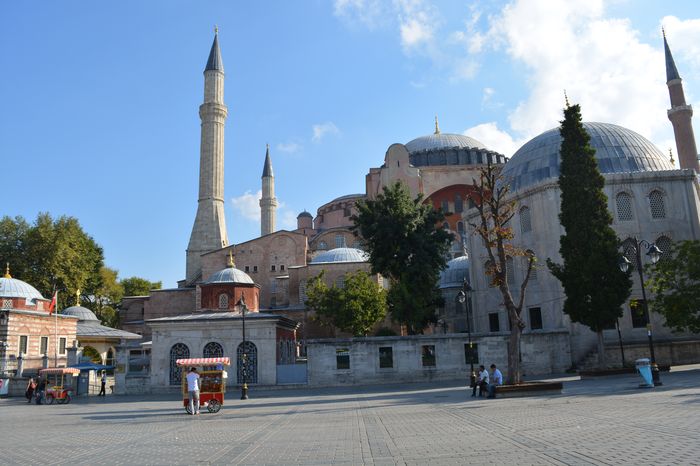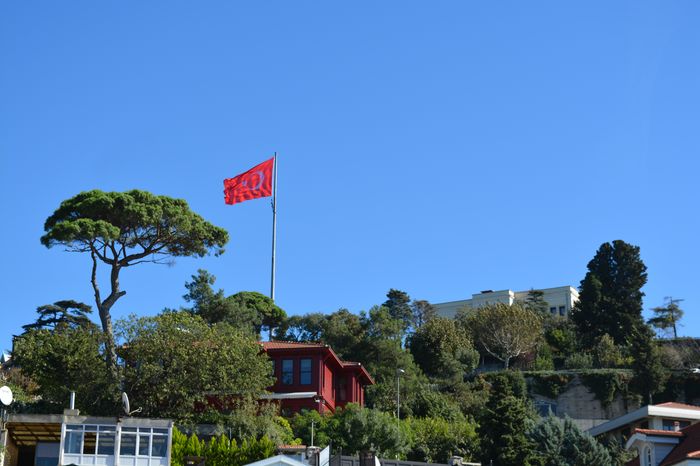The historian Heyd identified Zindan Kapoussi with the Porta Hebraica, a gate mentioned in the charters granted to the Venetians during the thirteenth century. According to his interpretation, this entrance served as the access point to the Jewish quarter that existed in the area near the Golden Horn. However, a closer look at the evidence suggests that this identification is not completely accurate Street and Pier of the Drungarii.
Later research indicates that the Porta Hebraica of that period was either identical with the Gate of the Perama (modern Balouk Bazaar Kapoussi) or located just a short distance east of it. This would place the Jewish quarter and its gate closer to the main ferry connection between Constantinople and Galata, rather than at Zindan Kapoussi. The distinction is important because it clarifies how the city’s waterfront was organized in Byzantine and later Venetian times.
The Location and Meaning of the Gate of the Perama
The Gate of the Perama (Πέραμα, meaning “crossing” or “ferry”) was located where Balouk Bazaar Kapoussi stands today. The name perfectly describes its purpose, as it marked the most important ferry point between Constantinople and the suburb of Galata on the opposite shore of the Golden Horn.
In Byzantine times, communication between the two sides of the harbour was carried out entirely by boats, since there was no permanent bridge across the Golden Horn, except for one temporary or wooden bridge near its upper end. The Gate of the Perama was therefore one of the busiest and most vital spots in the city, constantly filled with merchants, sailors, and citizens crossing to and from Galata Round Tours Turkey.
The Church of St. Irene at Sycae and the Miracle of Justinian
The first known reference to the Perama comes from the historian Theophanes, who describes an event during the reign of Justinian the Great in the year 542. That year, Constantinople was devastated by a terrible plague, during which Justinian himself fell gravely ill. When he later recovered, he attributed his healing to the relics of the Forty Martyrs, discovered during the rebuilding of the Church of St. Irene in Sycae—the ancient name for Galata.
To celebrate this miraculous event, the newly restored church was solemnly dedicated in an elaborate ceremony. The service was conducted by Menas, the Patriarch of Constantinople, together with Apollinarius, the Patriarch of Alexandria, who happened to be visiting the capital at that time. The two patriarchs, seated together in the Imperial chariot, carried upon their knees the relics of the Forty Martyrs.
Their journey began from the Great Church of St. Sophia and proceeded through the city to the Gate of the Perama. There, the prelates and the relics were placed in a royal boat, which crossed the harbour to Sycae, where Emperor Justinian awaited their arrival. The event was regarded as a symbol of divine mercy shown to both the emperor and the city during a time of great suffering.
The Ferry and Its Alternative Names
The ferry crossing at this site was also known by several other names throughout history. In Latin documents, it appears as Trajectus Sycenus or Transitus Sycarum, both meaning “the passage to Sycae.” These names reflect the ancient designation of the suburb, Sycae, before it became more widely known as Galata.
Later, after Emperor Justinian rebuilt the walls and theatre of Sycae and granted it the rights of an independent city, the area was renamed Justinianopolis in his honour. Consequently, the ferry itself was sometimes called Transitus Justinianarum, the “Passage of Justinian.”
The pier on the Constantinopolitan side of the ferry was known as the Scala Sycena—the “Landing of Sycae.” It was from this very pier that countless Byzantine citizens, traders, and pilgrims began their short but significant voyage across the harbour.
The Gate of the Perama was not merely an opening in the city’s fortifications; it was a gateway of connection—linking the great capital of the Byzantine Empire with its bustling suburb of Galata. The ferry served as a lifeline of trade, faith, and daily life for centuries. From the sacred procession of Justinian’s patriarchs to the constant flow of ordinary travellers, this site reflected the enduring rhythm of a city balanced between empire and sea, faith and commerce.
